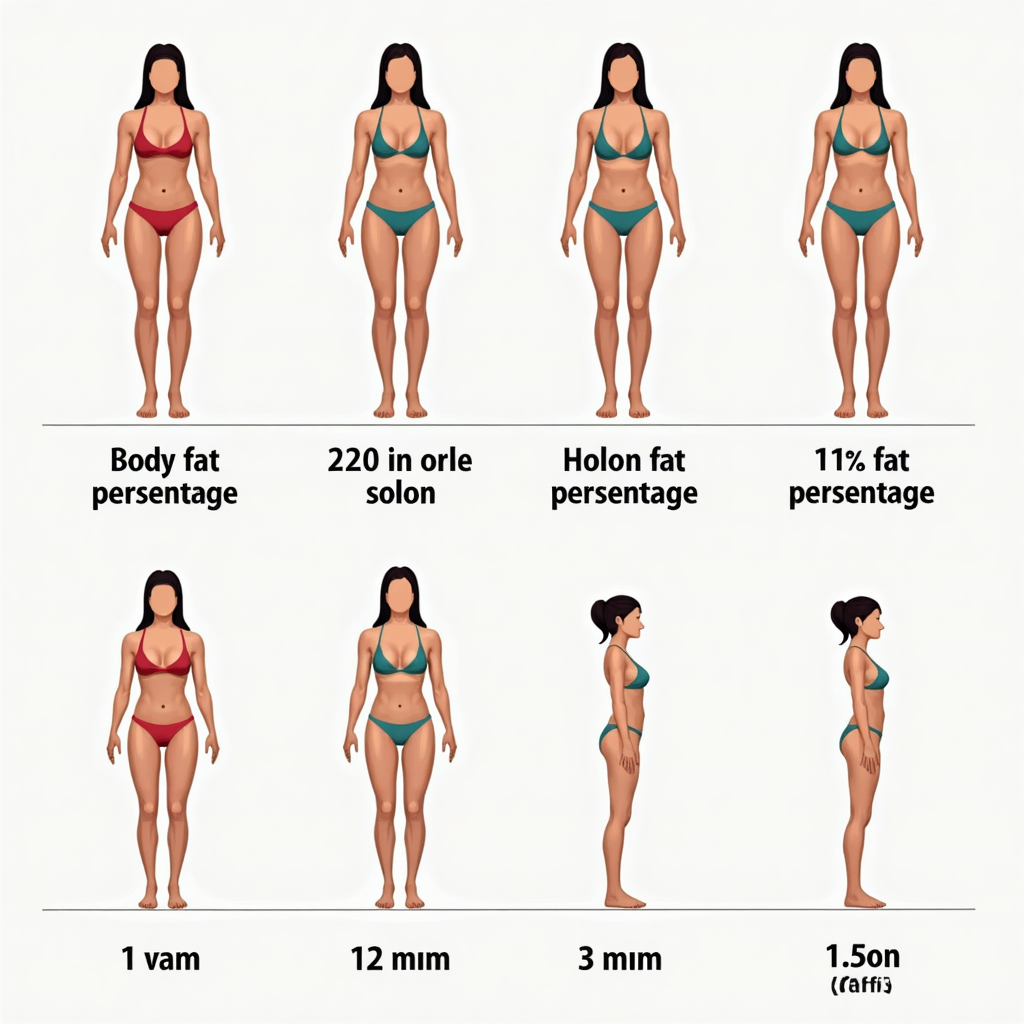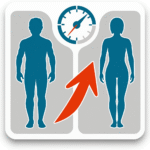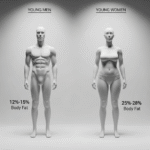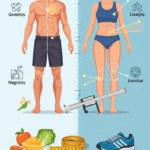Fat calculators tools reveal crucial insights into body composition. Learn to set health goals and navigate nutrition for a healthier lifestyle today!
Body Fat Calculator
Table of Contents
Fat calculators are essential tools for understanding body composition and health. This guide explores how these calculators work, the significance of body fat percentage, and how to interpret results for fitness and nutrition. Learn how to incorporate fat calculator insights into your wellness journey, set achievable health goals, and make informed dietary decisions. Discover the limitations of various fat calculation methods and enhance your understanding of personal health through accurate body composition assessments. Empower yourself on the path to a healthier lifestyle with effective strategies tailored to your unique needs.

Introduction to Fat Calculators
Fat calculators serve as essential tools in the realm of health and fitness, providing individuals with valuable insights into their body composition. Understanding body fat percentage is crucial as it reflects not only overall health but also the effectiveness of fitness regimes. These calculators are designed to estimate the amount of fat in the body relative to total weight, offering a clearer picture of one’s physical state beyond simply monitoring body weight.
The primary purpose of fat calculators is to assist individuals in determining their body fat percentage, which plays a significant role in tailoring personal health and fitness goals. Many people aspire to achieve an optimal body composition for reasons ranging from enhancing athletic performance to improving metabolic health. By utilizing fat calculators, users can take steps toward understanding how their body functions and how factors like diet, exercise, and lifestyle choices influence their overall well-being.
Fat calculators typically require basic inputs such as age, gender, height, weight, and occasionally other measurements like waist or hip circumference. With this data, they utilize established equations and algorithms to provide an estimate of body fat percentage, thus helping users to monitor their progress over time. Embracing the knowledge gained from fat calculators can promote informed decisions regarding nutrition and physical activity while fostering motivation to reach desired health milestones.
In conclusion, the role of fat calculators in health and fitness is vital, as they facilitate a deeper understanding of body composition and empower individuals to make necessary adjustments in their lifestyle. Using these tools can be immensely beneficial on the journey toward achieving a healthier, more balanced life.
Input Fields: Gathering Personal Data
Fat calculators are tools designed to estimate body fat percentage and overall health based on a variety of personal data points. The accuracy of the results obtained from these calculators is highly dependent on the quality of the input information provided. Consequently, understanding the significance of each input field is essential for achieving reliable outcomes.
One of the primary parameters requested is gender. This distinction is crucial as male and female bodies distribute fat differently. Consequently, gender-specific formulas are typically utilized to enhance the precision of the fat estimates. The second key input is age. As individuals age, their metabolism and body composition tend to change, impacting body fat levels. Younger individuals often have higher metabolic rates, while older adults may experience increasing body fat percentages due to hormonal changes.
Next, physical measurements such as height and weight are fundamental components. These metrics are vital in calculating Body Mass Index (BMI), which can serve as an initial indicator of healthy body weight relative to height. Another critical measurement is waist circumference, which further aids in assessing fat distribution in the body. A higher waist measurement can indicate an increased risk of cardiovascular diseases and metabolic syndrome.
It is imperative to input these measurements with accuracy to ensure that the fat calculator provides a valid assessment. Even minor discrepancies in values can lead to substantial variations in the calculated body fat percentage. Thus, taking the time to measure each parameter carefully is paramount for obtaining useful insights into one’s body composition and overall health status.
Understanding Body Fat Percentage
Body fat percentage represents the proportion of fat in an individual’s body relative to other components, such as muscle, bones, and organs. It is a crucial metric for assessing overall health, as it provides insights into an individual’s body composition and weight-related health risks. Body fat percentage is generally categorized into two main types: essential fat and storage fat. Essential fat is necessary for maintaining life and reproductive functions, while storage fat serves as an energy reserve. The balance between these two types plays a significant role in physical health and wellness.
Healthy body fat percentage ranges can vary depending on factors such as age, gender, and fitness level. For instance, it is generally accepted that healthy body fat percentage ranges for adult women fall between 21% and 35%, while for men, this range typically lies between 8% and 24%. These ranges are essential benchmarks for identifying potential health issues associated with overweight or obesity. An elevated body fat percentage can increase the risk of developing chronic conditions, such as heart disease, diabetes, and high blood pressure.
Additionally, understanding body fat percentage can aid individuals in setting fitness and health goals. Rather than focusing solely on weight, which can be misleading, tracking body fat percentage allows for a more nuanced understanding of one’s progress. For instance, an individual may experience weight loss while simultaneously increasing muscle mass, leading to little change on the scale but a significant improvement in body fat percentage. Therefore, regularly assessing body fat percentage can be beneficial for optimizing health outcomes and making informed lifestyle decisions.
Dynamic Calculations: The Science Behind the Numbers
Fat calculators are tools designed to estimate body fat percentage through dynamic calculations that incorporate various input data. These calculators often employ logarithmic formulas, which are grounded in mathematical principles to analyze the relationship between body measurements and body fat. Generally, factors such as weight, height, age, and gender are inputs that significantly influence the accuracy of the results generated by these calculators.
The logarithmic functions used in these calculations serve to normalize the wide range of potential body fat values, allowing for a more consistent and reliable assessment. For instance, when using the body mass index (BMI) in conjunction with waist circumference measurements, calculators can provide a nuanced estimate of body fat percentage. The logarithmic scale is essential because it compresses large ranges of values into a more manageable format, facilitating easier comparisons and calculations.
Another important aspect of the dynamic calculations used by fat calculators is the incorporation of empirical data. Many calculators are based on research studies that have measured the body composition of diverse populations, thus providing a robust foundation for their algorithms. This empirical data ensures that the output remains relevant and accurate for a broad audience. The inclusion of demographic variables—such as age and gender—further enhances the precision of the figures derived from these calculators, as metabolic rates and body composition vary across different populations.
Furthermore, the relationship between fat mass and lean tissue is often represented in these calculations, offering insights into not just body fat percentage, but overall body composition. Understanding these dynamic calculations allows individuals to better interpret their results. This is crucial for those seeking to maintain or achieve a healthy body composition, as the knowledge equips them with valuable information for making informed lifestyle choices.
Result Display: Interpreting the Output
The output generated by a fat calculator can be pivotal in understanding one’s body composition and health status. Typically, the primary output is the body fat percentage, which serves as a benchmark for evaluating overall fitness. This percentage indicates the proportion of fat in relation to the total body weight. It is crucial to contextualize these numbers, as they provide insight beyond mere aesthetics; they reflect health risks associated with excess body fat or low fat levels.
A healthy body fat percentage varies by age and gender. For instance, essential fat, necessary for physiological function, should comprise approximately 2-5% for men and 10-13% for women. Conversely, values exceeding 25% for men and 32% for women may indicate higher health risks. Understanding where one falls within these ranges can guide fitness and nutrition strategies, forming a foundation for enhancing personal health.
Moreover, fat calculators often provide additional data such as lean body mass and the recommended caloric intake for achieving fitness goals. Lean body mass denotes the weight of everything in the body except fat—muscle, bone, water, and organs. This metric is vital; it helps gauge muscle growth or loss over time and indicates how effectively one is burning calories. The caloric intake suggestion can aid in planning diets tailored to maintain or reduce body fat percentage sustainably.
When interpreting fat calculator results, individuals should consider lifestyle factors such as activity level, dietary habits, and overall health. It is essential to approach these figures as one part of a broader health assessment rather than isolated measures. By accurately interpreting these outputs, users can make informed decisions, helping to align their health goals with the necessary actions to meet them effectively.
Limitations of Fat Calculators
Fat calculators serve as a useful tool for estimating body fat percentage and assessing overall health. However, they come with certain limitations that users should be aware of. One prominent issue lies in the accuracy of the calculations, which can significantly vary based on the methods employed. Different calculators may utilize distinct formulas or measurement techniques, resulting in diverse outcomes. For instance, methods such as skinfold measurements, bioelectrical impedance analysis, and circumference measurements each have their inherent degrees of variability. This variance can lead to discrepancies that may misrepresent an individual’s true body composition.
Moreover, individual differences play a critical role in the effectiveness of fat calculators. Factors such as age, sex, ethnicity, and fitness level can impact the accuracy of body fat estimation. For example, a standard calculator may not adequately account for muscle mass variations, which can skew results for individuals with a high level of fitness or weight training experience. Consequently, individuals with a muscular physique might receive misleading assessments of their body fat percentage. Additionally, hormonal factors and genetic predispositions also contribute to body composition, further complicating the equation.
Given these limitations, it’s essential to understand that fat calculators are best used as a supplementary tool rather than a definitive assessment of personal health. For those seeking a more accurate evaluation, consulting a healthcare professional or a qualified nutritionist is advisable. These experts can perform comprehensive assessments that consider a broader range of factors, providing tailored recommendations that align with individual health goals. By acknowledging the limitations of fat calculators and seeking professional guidance when necessary, individuals can gain a more nuanced understanding of their body composition.
Comparing Different Fat Calculation Methods
Understanding body fat percentage is crucial for assessing overall health and fitness. Various methods exist to calculate this metric, each offering unique advantages and limitations. Three notable methods include skinfold measurements, bioelectrical impedance analysis (BIA), and dual-energy X-ray absorptiometry (DEXA) scans. Each method varies significantly in terms of accuracy, convenience, and cost.
Skincare measurements involve the use of calipers to pinch and measure skinfold thickness at specific sites on the body. This method is relatively inexpensive and can be performed in a variety of settings, such as clinics or gyms. However, its accuracy largely depends on the skill of the practitioner, and it may not be suitable for all body types, particularly for individuals with obesity or those with a high muscle mass. Variability in technique and the specific equations used for calculation can lead to potentially inaccurate interpretations of body fat percentage.
On the other hand, bioelectrical impedance analysis offers a more accessible option, relying on electrical signals passed through the body to estimate body composition. This method is portable and user-friendly, making it popular in both clinical and home settings. However, hydration levels can significantly influence results, leading to fluctuations in body fat estimates. Individual differences, such as age, gender, and ethnicity, may also affect the reliability of BIA.
Finally, DEXA scans provide a highly accurate measurement of body fat percentage by using low-level X-rays to differentiate between fat and lean mass. This method is often regarded as the gold standard for body composition analysis due to its precision. However, cost and accessibility can be prohibitive, as DEXA scans typically require a medical facility. Additionally, exposure to radiation, although minimal, may concern some individuals.
In summary, while each fat calculation method has its benefits and drawbacks, selecting the appropriate approach depends on individual needs, access to resources, and the desired level of accuracy. Understanding these differences can help individuals make informed decisions about monitoring their body fat percentage and overall health.
Integrating Fat Calculator Results into Your Fitness Journey
Understanding and utilizing the data provided by a fat calculator can significantly enhance one’s fitness journey. The first step in effectively integrating these results is to set realistic and achievable goals based on your current body fat percentage. This metric serves as an essential indicator of overall health and fitness. By assessing your body composition, you can tailor your aspirations more effectively, ensuring they align with both your personal circumstances and fitness objectives.
Once your goals are defined, the next phase involves creating a structured workout plan. Tailoring your fitness routine based on your fat calculator results can help focus on areas that require improvement. If the results indicate a higher body fat percentage than desired, incorporating both strength training and cardiovascular exercises can be beneficial. Cardiovascular workouts promote calorie burning, while strength training helps build muscle, ultimately leading to a more favorable body composition over time.
Nutritional guidance is equally vital in this process. Understanding your body fat percentage allows for a more informed approach to diet. For example, individuals with higher body fat may benefit from a reduced caloric intake and an increased emphasis on whole, nutrient-dense foods. Meal planning that prioritizes protein intake can help sustain lean muscle mass while promoting fat loss. Additionally, understanding macronutrient ratios can provide further insights into how to craft your meals to meet your fitness goals.
Utilizing the fat calculator results in combination with a well-structured workout plan and dietary adjustments creates a comprehensive approach to health and fitness. Regularly reassessing both body fat percentage and fitness achievements can offer tangible markers of progress, motivating individuals to continue striving towards their objectives.
Conclusion
Fat calculators serve as valuable tools in the realm of personal health and fitness. By providing insights into body fat percentages and distribution, these calculators can help individuals gain a clearer understanding of their current health status. They play a significant role in promoting health awareness, serving not just as a guide for weight management, but also as an encouragement for adopting healthier lifestyles.
Utilizing fat calculators can enhance motivation as individuals track their progress over time. By setting specific goals based on calculated data, users are empowered to make informed decisions regarding their nutrition and exercise routines. This accountability can foster a stronger commitment to personal fitness and well-being. Furthermore, understanding where one stands in terms of body composition can lead to more targeted workouts and dietary adjustments, thereby maximizing the effectiveness of one’s health regime.
However, it is essential to remember that fat calculators are just one aspect of a holistic approach to health. They should complement, rather than replace, advice from healthcare professionals. A balanced strategy that incorporates nutrition, physical activity, and mental well-being is critical for achieving optimal health outcomes. As you consider integrating these tools into your personal health journey, be sure to approach them with realistic expectations and an understanding that health is multifaceted.
Ultimately, fat calculators can guide you in evaluating your personal health goals and inspire you to create lasting positive changes. By viewing them as a starting point or a reference rather than an absolute measure, you can set yourself on a path toward achieving a healthier and more fulfilling lifestyle.









